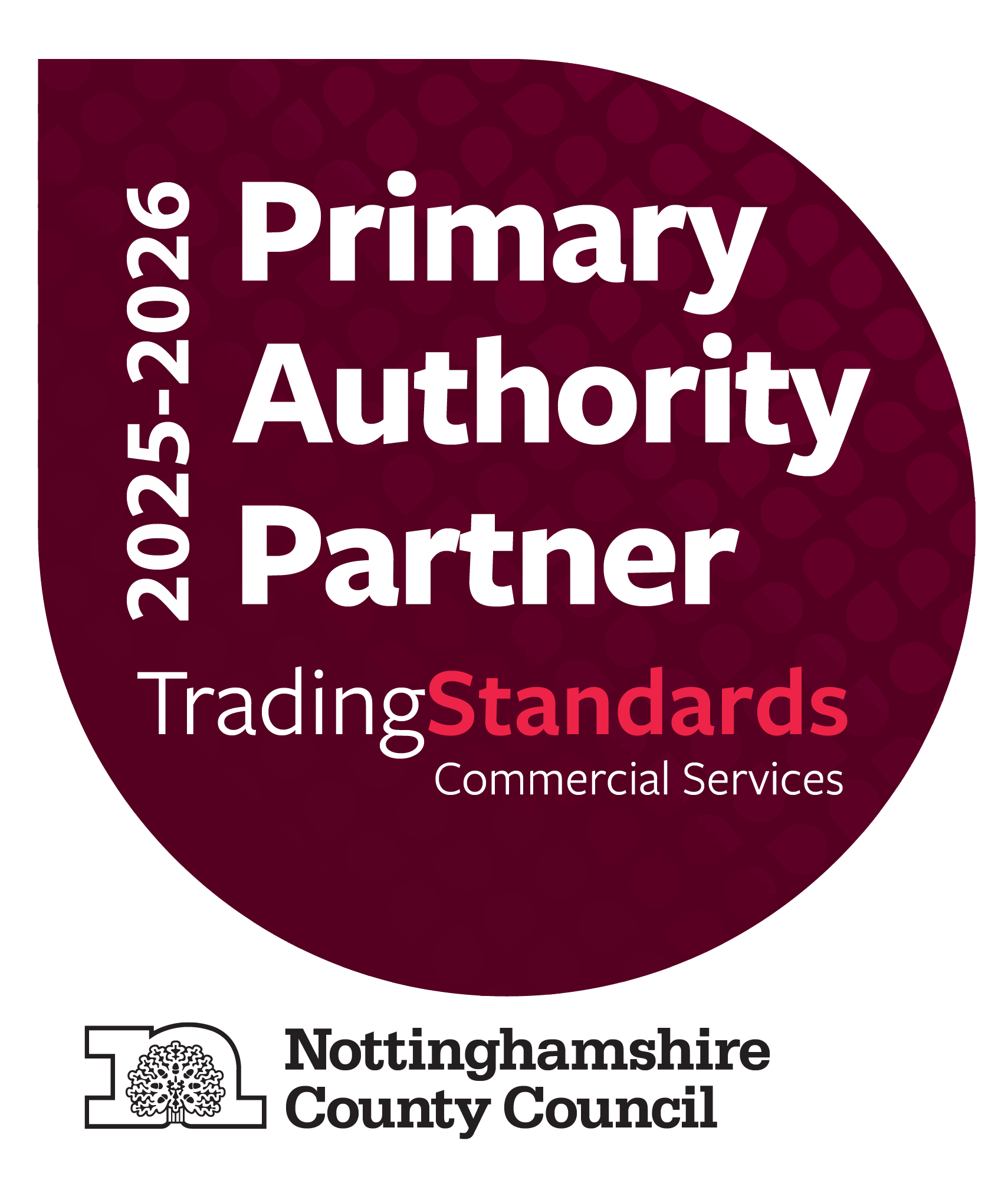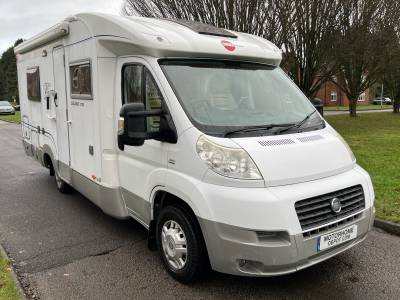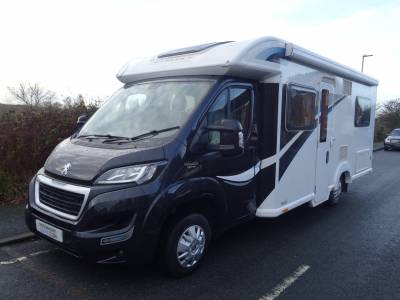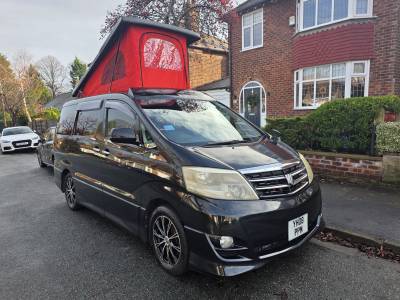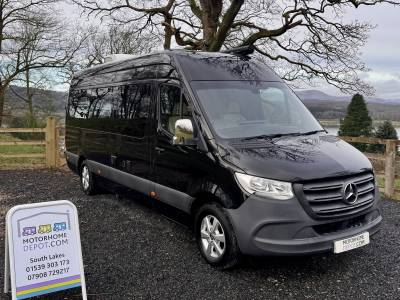
Motorhomes For Sale! How to Get it Right as a First Time Buyer
If you are thinking of buying your first motorhome or campervan, the last thing you want to hear is someone advising you to have patience. After all, what you really want to do when you see motorhomes for sale, is to buy something and get out there on the road and start enjoying your new purchase! But trust us, it really does pay to take your time, do plenty of research and if possible, try before you buy. We have been in the motorhome industry many years and you simply wouldn't believe how many people we've seen buy a motorhome, only to contact us again a few weeks later to say they made the wrong choice.
This can be for all sorts of reasons, but the most common, is the layout. Speaking personally, it took me many goes to find out exactly what the right layout was for my young family when we first started motorhoming many years ago. I was lucky - I was in the trade and my mistakes weren't expensive mistakes. But we have seen plenty of people exchange motorhomes after only a few weeks and suffer the financial hit that this entails. The problem is, it is only after using the motorhome for a while that its shortcomings become apparent. So, here is our guide to buying your first motorhome and how to avoid the more common mistakes.
Motorhome Types
Let's start by looking at the various types of motorhomes and campervans. You may immediately get a feel for which type will most suit your needs and this will help you to start the process of narrowing down the field.
Campervans
The term campervan is generally used to describe any commercial van that has been converted into a mini "Motorhome". That is to say it has had things added to it so that it can accommodate seating, cooking and eating, sleeping and usually some form of bathroom.
 When most people think of a campervan they think of the good old VW camper. Amazing to think how the slow, noisy, prone to over heating camper of my childhood excursions, has now turned into a high value fashion icon of the camping world! However, the really interesting thing about this is that it highlights just how far campervans have come over the years. There is a huge range available now in terms of makes, models, facilities and prices, with prices at the luxury end of the market getting on towards £100,000. A quick look at the campervans for sale on the Motorhome Depot website confirms the huge range that is available.
When most people think of a campervan they think of the good old VW camper. Amazing to think how the slow, noisy, prone to over heating camper of my childhood excursions, has now turned into a high value fashion icon of the camping world! However, the really interesting thing about this is that it highlights just how far campervans have come over the years. There is a huge range available now in terms of makes, models, facilities and prices, with prices at the luxury end of the market getting on towards £100,000. A quick look at the campervans for sale on the Motorhome Depot website confirms the huge range that is available.
The obvious thing to consider about campervans is their size. Compared to coach built motorhomes, they are small. On the plus side, this makes them easy to drive and park and they are generally very user friendly. But of course, the flip side of that is that the living space is very limited. However, high tops, pop ups and awnings can all alleviate the lack of space and make a real difference to their usability.
Coachbuilt Motorhomes
Coach built motorhomes are what most people recognise as a typical motorhome of the sort seen in the UK and mainland Europe. The term "Coachbuilt" comes from the construction process. A "Coach builder", which nowadays usually means a large motorhome manufacturer, buys a chassis and then builds the motorhome habitation area onto the chassis. There are three recognised types of European style coachbuilt motorhome.
Low Profile: As the name suggests, the motorhome has a low profile with the body work rising not much higher than the cab. In particular, what low profile motorhomes are absent of, is the bulbous area over the cab which can house a sleeping area. This makes them the smallest and lightest of the coachbuilt class and therefore, very user friendly for driving and parking. However, this does of course mean that space inside is more limited and you lose the over cab sleeping area. Not a problem if you don't want to be climbing a ladder to bed, but a really useful space for those that don't mind to sleep in and as a temporary storage area.
Over Cabs: Over cabs are known as such because of the over cab sleeping area they have. This might not seem like much of a difference to a low profile, but it actually makes it a very different motorhome. Let's start with the obvious - they are bigger, heavier and a little more difficult to drive and maneuver. All of a sudden you will be looking for low hanging trees and other obstacles that you wouldn't need to consider in a low profile. Something else to consider here is to make sure you buy one with a powerful enough engine to cope comfortably. But it's inside that you will notice the real difference. The over cab sleeping area tends to be really quite large and makes a very spacious sleeping area (and daytime storage area). Without the need to find this sleeping area in the living space, this now gives you many more options for the layout of your motorhome.
A Class: A Class motorhomes tend to be at the luxury end of the market, although a number of manufacturers do now build "Budget" versions. What distinguishes them from other types of motorhome is the way they are built. The manufacturer starts with just the chassis with no cab attached to it.  The entire body of the motorhome is then built on to the chassis. No only does this give A Class motorhomes their distinctive look, but the feel inside the motorhome is very different as well. Once inside, the motorhome feels like a single "Room", with no separation between the habitation area and the driving area. A Class motorhomes often have swiveling driver and passenger seats that can turn 180 degrees into the living area to capitalise on this fact and maximise the seating layout. Other benefits includes great visibility when driving, good insulation and often, a drop down bed over the driving area.
The entire body of the motorhome is then built on to the chassis. No only does this give A Class motorhomes their distinctive look, but the feel inside the motorhome is very different as well. Once inside, the motorhome feels like a single "Room", with no separation between the habitation area and the driving area. A Class motorhomes often have swiveling driver and passenger seats that can turn 180 degrees into the living area to capitalise on this fact and maximise the seating layout. Other benefits includes great visibility when driving, good insulation and often, a drop down bed over the driving area.
RV's: RV's are typically motorhomes manufactured in America for the American market. They can be both coach built and A Class but have the same thing in common - their size! They really do reflect the scale of things in the USA. Bigger roads, bigger parking areas, bigger camp sites, bigger pitches. Of course, when you step inside an RV, all of this is very apparent.
Everything is on a larger scale and not content with that, many have slide-outs - extensions that slide out to make the living area larger. They are large, well appointed and very comfortable. The flip side of this is that they are a real challenge to live with on UK roads and camp sites. Imagine driving a passenger coach around and it will give you an idea of what you are up against.
Layouts
Layout - a small word, but perhaps the most important thing when it comes to buying and using a motorhome. In a motorhome, you have sleeping areas, areas for sitting, a dining area, a kitchen and a bathroom. Now add to that equation variations like fixed beds, bunk beds, beds you can make up, swivel seats, removable dining tables and so on. And add the fact that you can layout all of these factors in any way you like. There are almost a limitless number of layouts for motorhomes. The challenge is, working out what layout will work best for you.
To be honest, you will be lucky if you get the layout absolutely right first time. And in fact, it can take experience and several tries to find your ideal layout. The important thing is to try and get as close to getting it right first time as you can, so that you can at least happily live with your motorhome. Getting the right layout can be one of those things that evolves over time as you learn a new lesson every time you change your motorhome. And your needs can change over time too. When my children were very small, it took a few tries to find out that the best layout for us was a dinette at the front, bunk beds across the back and both the kitchen and bathroom in the middle forming a natural sound barrier. Later in life, if the children are accompanying or you don't fancy clambering up into an over cab bed, a fixed bed layout may have more appeal. All of which brings us onto the decision making process on how to choose your ideal first motorhome.
Things to Consider When Buying a Motorhome or Campervan
What is your budget?
Obviously the first thing to consider is your budget and how flexible you are prepared to be on that budget - the motorhome market is a very tempting place to shop and it is easy to go over budget! The first choice you may have to face is if your budget enables you to make a choice between buying new or used. It may be that you can either buy new, or get a bit more motorhome for your money by buying used.
The build quality of modern motorhomes means buying used is not a problem. Motorhomes are built on commercial vehicle chassis which are very robust and designed to do many, many thousands of miles. Most motorhomes don't do anywhere near the sort of miles that would cause the chassis and engine a problem. It is the habitation area of coach built motorhomes where problems are more likely to surface. However, there are good warranty plans available for used motorhomes and we always recommend getting a pre-purcahse inspection when buying used.
What are you going to use it for?
What you are going to use your motorhome for, is the most important factor in making your choice, even more so than budget. Better to have a slightly older motorhome that does exactly what you need it to, rather than a newer motorhome that doesn't work for you. Here are some things to consider:
Who will be using the motorhome?
You need to think through who will be using the motorhome on a regular basis. This will probably determine the layout you choose. For instance, if it will only be you and your partner, a fixed bed my be an appealing option. If you have young children, bunk beds may come in to your thoughts. Or you may decide that occasional guests will be fine in an awning. Do you like to sit around a table to eat and so need a dinette layout, or would you prefer the comfort of a lounge?
The other important thing to consider is how many people will actually be travelling in the motorhome, because each person needs a seat belt. You will be surprised at how the number of seats with seat belts varies depending on the layout. Think about how many people will regularly travel with you and make that one of your first checks on suitability.
Where are you going to park or store your motorhome?
It seems an obvious point, but in the excitement of buying a motorhome, plenty of people haven't thought through the issue of where it is going to be parked or stored. If you are in any way restricted for space, the first thing to do is measure the parking area, pull-out areas, turning circles, gate widths etc. And don't forget, if the motorhome can't be driven out of a driveway in a straight line, you have to factor in the swing of the rear overhang in your measurements. (Yep, I've clipped a few gate posts!) We have literally had people buy a motorhome only to find it did not fit on their driveway!
Left hand drive or right hand drive?
Most UK buyers of motorhomes will spend most of their time driving on the left hand side of the road. But if you plan to spend more time touring in Europe that the UK, you may want to consider a left hand drive motorhome. They are widely available with little difference in price. When you search motorhomes for sale on the Motorhome Depot website the search criteria allows you to specify whether you are looking for a right or left hand drive motorhome.
Will you be driving long distances?
The way that people use their motorhomes and the mileage they cover varies enormously. But if you are contemplating grand European tours and many hours of driving, you need to make that experience as comfortable and enjoyable as possible. Thankfully, the chassis on which modern motorhomes are based are generally all very good. However, you may still wish to consider things like engine size, automatic versus manual gearboxes, air conditioning and the sort of things that make long distance driving easier.
Accessories
Almost all new motorhomes have accessories fitted to them by their first and sometimes subsequent owners. Our only tip here is that it is better value to buy a motorhome already loaded with TV's, micro wave oven, awning, bike rack and other "Essential" accessories, than to have to fit them yourself. If not, you can find yourself spending additional money into the thousands of pounds to fit accessories.
Try Before You Buy
Something that you may consider before investing in your own motorhome, is to hire a motorhome first. If you have never motorhomed before, it might be sensible just to make sure it is all you hoped it would be. But on a more practical level, it may help you choose exactly what sort of motorhome you wish to buy. In particular, it may help with the choice of layout. If you decide to do this, our recommendation would be that you go through all of the thought processes of choosing your ideal motorhome first. Having done that, you should try and hire exactly what you think you want to buy. As well as the usual small hire companies with a fairly limited choice of motorhomes, there are a few companies that hire out motorhome owners vehicles for them. They tend to have hundreds of motorhomes on their books. This makes it very likely that you will be able to hire something very much like the type of motorhome you wish to buy. Doing this may confirm your choice, or throw up some things that you hadn't thought about, and help you make the right final choice.
You Are Ready to Buy Your First Motorhome or Campervan!
OK, hopefully at this point you have made your choice or at least narrowed down the field. But you're still not quite ready to do a web search for motorhomes for sale. Now the process is all about researching the market. It really does pay to be a smart buyer with as much information to hand as possible.
Draw up a shortlist
To start with draw up a shortlist of makes and models you are considering. Look at reviews of each, make comparisons and get to know these motorhomes. This will help you to stay focused on motorhomes that meet your criteria and not get distracted by something quite different that "Looks good value even though it doesn't really fit our criteria".
Research the market
Now you can start your research into what motorhomes on your shortlist are selling for. The internet makes this a simple process. Searching for motorhomes on your short list should throw up some immediate results. The way most websites work, you should be able to forward results to yourself as an email and start building a file on comparative prices. The other thing can do with some websites is set alerts for motorhomes that match your criteria as they come onto the market. You can do this on the Motorhome Depot website here.
In a short space of time you will become familiar with prices for your shortlisted motorhomes and get a feel of which ones are good value and worth going to look at.
Pre-purchase Inspections
Finally, something we would always advise buyers of used motorhomes to have is a pre-purchase inspection. After all, you wouldn't buy a house without some form of house buyers report or survey would you? The build quality of modern motorhomes is generally very good, but hidden problems can lurk undetected - the seller may not even know they are there. Damp is the obvious example, which can lay hidden until it has become a real problem. A pre-purchase inspection may help you avoid an expensive mistake, or at least give you grounds for renegotiation.
Motorhome Depot are here to help you buy your ideal motorhome. If you see a motorhome that we are selling that interests you, please do speak to the broker and ask as many questions as you like. Happy hunting!







